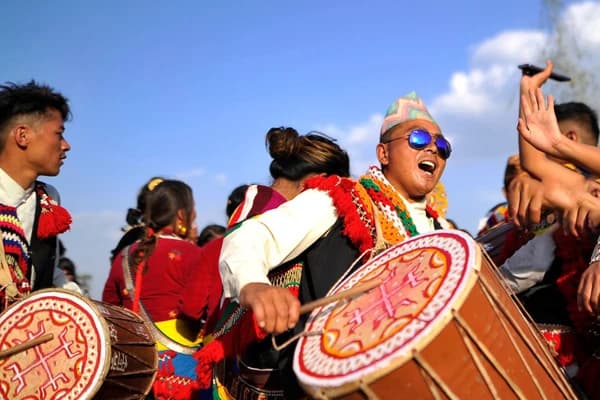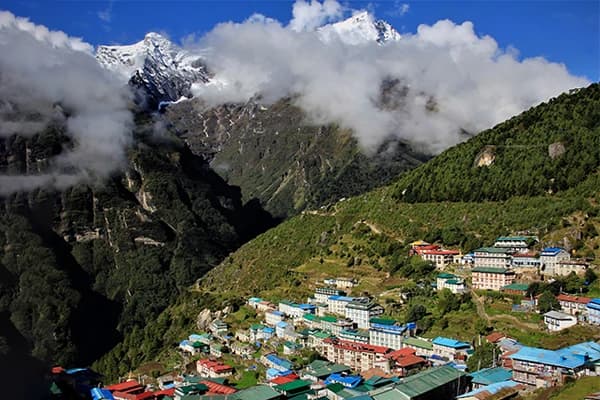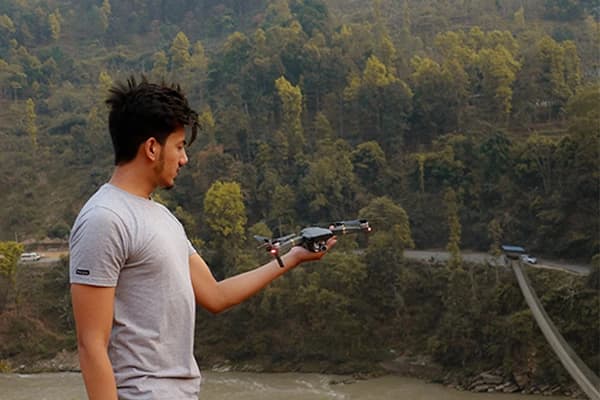Rituals and Traditions of Ghatasthapana 2025
- Choosing the Auspicious Time (Sait)
The ghatasthapana is an auspicious day and is linked to the tradition of invoking the goddess Durga in the home. So, the rituals are performed carefully. The time is selected using the Hindu lunar calendar.
The Hindu astrologers and the Nepal Calendar Determination Committee carefully determine the exact auspicious hour to perform the ghatasthapana rituals and invoke the maximum divine blessings. The selection is done in the governance of the Hindu astrological principles and scripture guidelines.
This timing is broadcast on radio, TV, and social media, and many families wait for it before beginning the puja.
- Preparing the Sacred Space (Dashain Ghar)
In the ghatasthapana auspicious time, the sacred space is created. The sacred space is often made in a separate, quiet, and clean room. That sacred space is called dashain ghar. The food of the Dashain Ghar is purified with cow dung and water.
In some places, the dashain ghar is decorated with mango leaves. Marigold flowers, or local plants. The rooms remain restricted to the other personas except for the household priests or male family members for the daily worship until Dashain ends.
Along with the dashain ghar, the surroundings of the room and the whole home are also cleaned to maintain the purity.
- Establishing the Kalash (Sacred Pot)
Establishing the kalas on the ghatasthapana is the central ritual of the day. It marks the official start of the Dashain festival.
Then a sacred pot is established in the Dashain Ghar. A sacred pot can be of any type, like a bronze, copper, or clay pot. The pot is then filled with the holy water and mixed with the coins, flowers, and betel nuts. Then it is covered with cow dung and sown with barley. Maize, or other sacred seeds.
A coconut is placed atop the Kalash, wrapped in red cloth, with mango or betel leaves arranged around it. The kalas themselves represent the goddess and are worshipped and revered throughout the festival.
- Planting the Jamara (Sacred Barley Shoots)
After the kalas are established, the next ritual is to sow the barley shoots (and sometimes maize, wheat, or sesame), called jamara seeds. It is one of the central rituals of ghatasthapana, the beginning of the Dashain festival.
First, the barley seeds are soaked in water overnight. Then, it is sown with the mixture of the soil and sand and is watered daily. The jamara container is placed on the clean and holy space during the rituals.
Thereafter, the container is stored in a cool, dark place away from direct sunlight. This step is important, as the jamara may turn green if exposed to the sunlight. When kept in a dark environment, the jamara sprouts and grows in the distinct yellowish-green color within 7-10 days.
- Invoking Goddess Durga (Puja Rituals)
On the ghatasthapana, family elders in the family and priests in the temple chant the Vedic mantras to invite the goddess Durga into the kalash and jamara.
During the puja rituals, offerings like flowers, incense, lamps, fruits, sweets, sacred red cloth, and tika powder are offered to the goddess. Some families also offer the coconuts to perform symbolic rituals to honor the goddess. This ritual is also called the Panchopachara puja.
From this day onward, Nava Durga Puja (worship of nine forms of Durga) begins, continuing until Maha Navami.
- Daily Rituals continuation after Ghatasthapana
Even after the ghatasthapana, there are several rituals that are continued till the end of the festival.
Each morning includes prayer sessions and homage offerings at the dashain ghar (prayer room). To invoke the goddess’s blessings for prosperity and protection, items like flowers, fruits, and others are offered.
The jamara is nurtured in a sacred and dark place. It is later used in the rituals. It is checked daily, and its steady growth is seen as a sign of good fortune.
- Role of Family and Community in the Ghatasthapana Ritual
There is a huge role for the family members and community in the ghatasthapana rituals. On this day, the families come together to perform the sacred rituals. For the ritual, usually the household's senior female member takes charge of all rituals.
The family performs the daily worship of the Kalas with offerings, prayers, and Vedic mantras throughout the festival durations. In the temples, the priests perform the pujas.
Besides that, the ghatasthapana is a communal event as well. People from different communities across Nepal participate in similar rituals. It shows the importance of the cultural identity and shared values that bind society.
The community gatherings like fairs, temple worships, and cultural programs are organized. People participate in the community gatherings. In the event, the exchange of the blessings. Sharing of food and collective prayers during the ghatasthapana remain key.
- Symbolic Beliefs Tied to the Ritual
All the ghatasthapana rituals hold the profound symbolic beliefs integral to the Dashain festival.
-The establishment of the sacred pot symbolizes the divine presence of the goddess Durga. The sacred pot, or kalas, represents abundance, prosperity, and the divine feminine power.
-The ritual of preparing the altar with layered sand and soil depicts the different realms of existence.
-The sprouting of the jamara signifies life, fertility, growth, prosperity, and blessings from the goddess.
-The worship of the Durga goddess reflects the belief in her power to protect against evil, bestow strength, and renew hope.
-Lighting the Akhanda Jyot (continuous flame) during the ritual symbolizes the eternal presence of divine energy.
-The act of nurturing Jamara for ten days mirrors the idea of nurturing life, family, and community values.
Regional and Cultural Variations
In most of the households, the ghatasthapana includes similar rituals like cleaning, purifying the home, placing the kalas filled with holy water, and sowing the barley seeds. All the invocations of the goddess Durga rituals are the same.
While in cities like Kathmandu, the special ghatasthapana ceremony is held in the historic sites like Hanuman Dhoka Palace. There, priests chant the Vedic mantras, and Nepal army bands play the traditional music.
The ghatasthapana has a new form in the Mithila region of Nepal. The popular dances like the jhijhiya folk dance add the additional cultural expressions to the day. Also, there are religious rituals with folk traditions.
Besides these regional celebrations, the ghatasthapana celebrations differ culturally too. The Newari communities celebrate the ghatasthapana as a part of the mwohni. There are additional rituals and offerings unique to their culture.
Even though there are cultural and regional variations, the ghatasthapana time and date are the same all over the country.
Restrictions and Beliefs During Ghatasthapana 2025
During the ghatasthapana, there are several important restrictions and beliefs followed due to the sacredness of the occasion.
There is a strict following that the room where virtual is to be performed must be a pure and sacred room. The room is closed to the outsiders during the ceremony to maintain the purity and sanctity. All the rituals going to be performed must be carried out within an astrologically auspicious time.
The altar is prepared with the sand. The sand must be brought from a sacred river or pond. Families must clean and purify their homes thoroughly before starting the rituals. Special prayers, mantras, and offerings are made to invoke the goddess Durga’s blessings.
Touching or disturbing the Kalash/Jamara unnecessarily is avoided. Watering the Jamara is seen as a form of offering to Goddess Durga. And if the Jamara grows tall and healthy, it is taken as a positive omen for the year ahead.
All the traditional customs are observed strictly to ensure the proper blessings during the Dashain. The other cultural belief is that mishandling the ritual timing or the altar’s sanctity can anger the goddess Durga and bring bad luck.
How do people treat Jamara with devotion during the 2025 festival?
During the Dashain festival, the people treat the jamara with deep devotion. It is grown from barley, maize, or wheat seeds sown in a sacred pot on ghatasthapana (the first day of Dashain). It is carefully nurtured in a dark and humid place. Daily worship is performed by the eldest male family member.
On Vijaya Dashami, jamara is used in a central ritual where elders place it on the heads of the younger relatives along with the tika. The ceremony is considered auspicious and is believed to bring health, protection, and blessings for peace and success.
The devotees saw the Jamara as a sacred living symbol of life and renewal. The worship of the jamara during Dashain is a vital part of expressing devotion and receiving divine blessings.
Without Ghatasthapana 2025, Dashain’s journey of blessings and unity could never begin.





